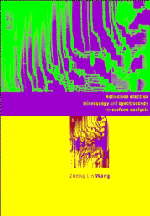Book contents
- Frontmatter
- Contents
- Preface
- Symbols and definitions
- 0 Introduction
- 1 Kinematical electron diffraction
- Part A Diffraction of reflected electrons
- 2 Reflection high-energy electron diffraction
- 3 Dynamical theories of RHEED
- 4 Resonance reflections in RHEED
- Part B Imaging of reflected electrons
- Part C Inelastic scattering and spectrometry of reflected electrons
- Appendix A Physical constants, electron wavelengths and wave numbers
- Appendix B The crystal inner potential and electron scattering factor
- Appendix C.1 Crystallographic structure systems
- Appendix C.2 A FORTRAN program for calculating crystallographic data
- Appendix D Electron diffraction patterns of several types of crystal structures
- Appendix E.1 A FORTRAN program for single-loss spectra of a thin crystal slab in TEM
- Appendix E.2 A FORTRAN program for single-loss REELS spectra in RHEED
- Appendix E.3 A FORTRAN program for single-loss spectra of parallel-to-surface incident beams
- Appendix E.4 A FORTRAN program for single-loss spectra of interface excitation in TEM
- Appendix F A bibliography of REM, SREM and REELS
- References
- Materials index
- Subject index
4 - Resonance reflections in RHEED
Published online by Cambridge University Press: 18 January 2010
- Frontmatter
- Contents
- Preface
- Symbols and definitions
- 0 Introduction
- 1 Kinematical electron diffraction
- Part A Diffraction of reflected electrons
- 2 Reflection high-energy electron diffraction
- 3 Dynamical theories of RHEED
- 4 Resonance reflections in RHEED
- Part B Imaging of reflected electrons
- Part C Inelastic scattering and spectrometry of reflected electrons
- Appendix A Physical constants, electron wavelengths and wave numbers
- Appendix B The crystal inner potential and electron scattering factor
- Appendix C.1 Crystallographic structure systems
- Appendix C.2 A FORTRAN program for calculating crystallographic data
- Appendix D Electron diffraction patterns of several types of crystal structures
- Appendix E.1 A FORTRAN program for single-loss spectra of a thin crystal slab in TEM
- Appendix E.2 A FORTRAN program for single-loss REELS spectra in RHEED
- Appendix E.3 A FORTRAN program for single-loss spectra of parallel-to-surface incident beams
- Appendix E.4 A FORTRAN program for single-loss spectra of interface excitation in TEM
- Appendix F A bibliography of REM, SREM and REELS
- References
- Materials index
- Subject index
Summary
Electrons reflected from a crystal surface are generated by two scattering mechanisms. Bragg reflection, which is purely an elastic scattering process, is responsible for producing sharp peaks governed by Bragg's law. Inelastic scattering, which is dominated by valence-loss and thermal diffuse scattering (TDS), contributes a Kikuchi pattern background in the electron angular distribution and results in electron energy losses and momentum transfers. The excitation of Bragg reflections critically depends on the diffracting conditions, and the intensity distribution in a RHEED pattern is the result of dynamical scattering of electrons by the crystal surface. It is thus important to understand how electrons are reflected from the surface in order to illustrate the surface sensitivity of REM.
In this chapter, the physics of surface resonance in RHEED are systematically illustrated. Experimental results will be shown to exhibit the nature of surface resonance. It will be demonstrated that the surface sensitivity of RHEED will be dramatically enhanced by resonance. Finally, the effect of inelastic scattering on resonance reflection will be discussed.
The phenomenon
Surface resonance is one of the most important scattering processes in RHEED and REM. The surface resonance effect was first observed by Kikuchi and Nakagawa (1933); the reflected-electron intensity suddenly increases when the diffraction spot crosses an oblique Kikuchi line. This is illustrated by the RHEED pattern shown in Figure 4.1. When the resonance condition is not satisfied, there is no strongly reflected beam (Figure 4.1 (a)). The intensity is increased by almost an order of magnitude if the surface resonance is excited (Figure 4.1(b)).
- Type
- Chapter
- Information
- Publisher: Cambridge University PressPrint publication year: 1996

